
Indrayudh Mondal, Ph.D., EIT
PI: Dr. Saugata Datta
E3Trace (Environment Exposure and Equity- Trace) Phase 2
E3Trace is a framework under development which source tracks, monitors, and reduces at source emerging contaminants like PFAS and other synthetic organic compounds (SOCs) by combining comprehensive life cycle assessments (LCAs) through a robust digital twin, pollution tracking in surface and groundwater, exposure tracking through wastewater-based epidemiology (WBE) complemented by an AI-driven material substitution process aiming to protect the population of Texas (by large the U.S.) and its water systems. Phase 1 deals with source tracking contaminants of concern (COC) in man-made products. Phase 2 encompasses the tracking of the pollutants identified in Phase 1.
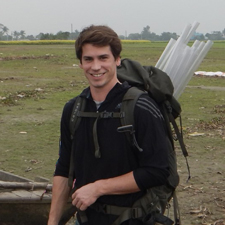
Tom Varner, Ph.D.
PI: Dr. Saugata Datta
Characterizing the Development and Chemical Processes of Permeable Natural Reactive Barriers along the Meghna River, Bangladesh
Tom’s research explores the mobility of arsenic from the sediments surrounding the Meghna River in Bangladesh. Tom is utilizing a phenomenon known as a Natural Reactive Barrier (NRB) to treat and prevent cross contamination in the river and aquifer.
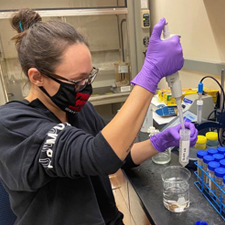
Ashley Aguilar
PhD student, Environmental Science and Engineering
PI: Dr. Saugata Datta
Understanding Processes of Hydrothermal Origin of As and F in the Independence Basin, Mexico
Ashley's research is focused on water contamination in Central Mexico. This study specifically investigates trace elements of arsenic and fluoride and their link to temperature release into the groundwater from a geothermal source. Ashley is also volunteering with the San Antonio River Authority by building post assisted log structures ("beaver" dams) to reduce erosion along the Medina River.
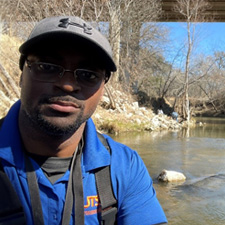
Andre Felton
PhD student, Environmental Science and Engineering
PI: Dr. Jeffrey Hutchinson
Understanding the Spatiotemporal Migration of Microplastics within Ephemeral Rivers and their Impact on Amphibian Fitness
Andre's research takes an environmental biology approach to evaluating and characterizing the distribution of microplastics along two ephemeral rivers (Leon Creek and Salado Creek) of Central Texas and the impact of microplastic uptake by co-occurring species within these aquatic systems. Specifically, this study investigates the role of ephemeral pools in fluvial migration of microplastics and the effects that this novel contaminant has on amphibian growth, development, and host-microbiome dynamics.
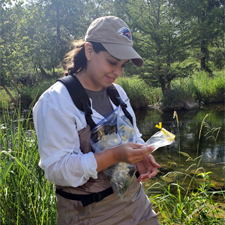
Fabiola Diaz Flores Estrada
MS student, Environmental Science
PI: Dr. Allison Veach
Influence of Wastewater Effluent on the Freshwater Microbiome of a Suburban Stream Ecosystem
Fabiola's research aims to dissect how point sources of wastewater effluent, varying in nutrient and microbial composition, alter Cibolo Creek, a suburban stream located in Boerne, TX, algal and bacterial dominance, energy flow, and biofilm microbiomes spatially over time. Her work will provide an important knowledge gap regarding linkages between carbon dynamics and the microbial taxa which mediate said dynamics in semi-arid ecosystems which require human intervention for flow maintenance.

Mikaela Garcia
MS student, Geosciences
PI: Dr. Saugata Datta
GIS Applications in Delineating Contaminants in a Transboundary Aquifer
Mikaela's research involves integrating GIS into the ongoing studies of water quality in transboundary aquifers.
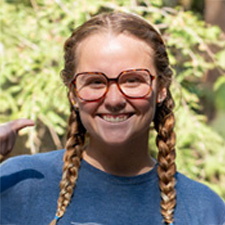
Cassidy Lane
MS student, Geosciences
PI: Dr. Saugata Datta
Toxic Trace Elements and Groundwater-Surface Water Interactions in the Brazos River Corridor

Ruben Olivares, Jr.
MS student, Geosciences
PI: Dr. Saugata Datta
Water Quality and Health in US-Mexico Border Region in Texas
Ruben's research focuses on determining the concentrations of various inorganic and organic contaminants in the water sources to understand underlying geochemical processes that influence the water chemistry and contaminant mobility.
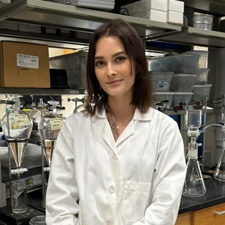
Paulina Quinonez
MS Student, Environmental Science
PI: Dr. Jeffery Hutchinson
Microplastics in Biofilms from Roadside Runoff
Paulina's project consists of characterizing the upper layers in detention basins to determine microplastic filtration from roadside runoff along highly urbanized roads. We are quantifying the types of microplastics present in biofilms and the underlying soils. Looking specifically at the effectiveness of capturing microplastics in detention ponds before they reach the Edwards Aquifer.
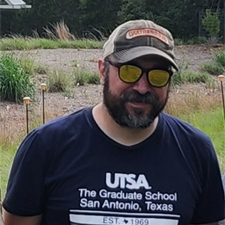
David Roberts
MS student, Environmental Science
PI: Dr. Allison Veach
Belowground Microbial Activity and Structural Responses to Stormwater Infiltration Berms
David's research explores how implementation of stormwater infiltration berms impacts soil microbiomes and carbon flow. He is also performing greenhouse experiments to understand how water availability impacts mycorrhizal fungi associated with dominant grass species (KR bluestem, little bluestem) in urban grassland habitats.

Ronny Saunders
MS student, Geosciences
PI: Dr. Saugata Datta
Quality Assessment Around the Edwards Aquifer
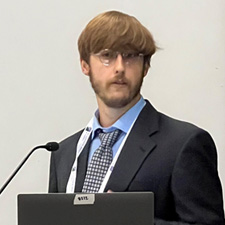
Alex Tribley
MS student, Geosciences
PI: Dr. Saugata Datta
Edwards Aquifer and Sediment Characterisation and Soil Infiltration Capacity
Alex's research aims to present the distribution of trace elements and contaminants of concern through the characterization of surface soils (up to 0.6 m depth) and understanding the link to groundwater chemistry across three regions (Contributing, Recharge, and Confined zones) of the Edwards Aquifer.

